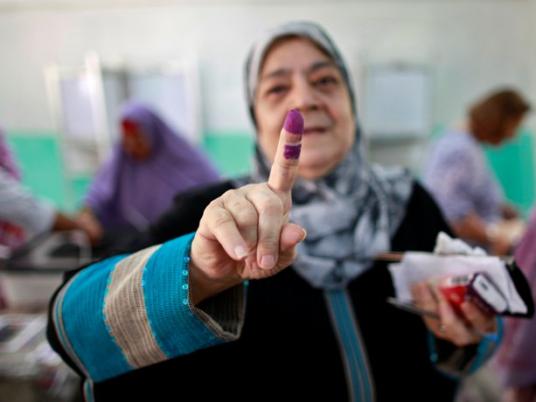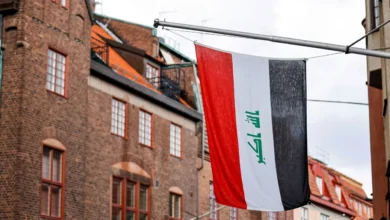
When major clashes in areas like Mansoura or Port Said break out, the Egyptian and international press descend upon the city for momentary coverage before retreating back to the capital.
At other times, events of a smaller scale often garner little, if any, media attention. But since the 2011 uprising, a new wave of community media has been trying to broaden the Cairo-centric cycle of Egyptian media through innovative local newspapers, Internet news sites, online radio and YouTube channels.
“There are so many stories to be told that are not told because of the centralized method with which we produce news in Egypt,” says Fatemah Farag, director of Welad Elbalad for Media Services, a media company she founded in 2011 to help develop localized, community-focused media.
“I think that the problem with local news in Egypt is not that people don’t want it, it’s just that it’s been [in the past] really bad. That’s what people don’t want,” she adds.
In fact, several mainstream newspapers have tried to produce local editions for their brands, but ended up closing these editions as they did not manage to attract readers.
Welad Elbalad for Media Services has so far set up weekly newspapers in Alexandria, Dishna, Mansoura, Fayoum, Nagaa Hammadi and Marsa Matrouh, with a paper coming to Beni Suef.
Reporting using different mediums from large cities such as Mansoura to rural areas such as Assiut and marginalized regions like Sinai, the leaders of these new community media initiatives are generally young, motivated and often working for free. They cite their work as part of the larger struggle to give a voice to the people in a revolutionizing Egypt.
Following decades of local media neglect and underdevelopment, these new initiatives also face an array of financial, legal, technical and conceptual challenges. They are also confronting traditional notions of journalism and media directionality.
Within the general mission to empower community media, some define themselves as professional journalists focused on the non-biased collection and dissemination of information. Others characterize their work using contemporary catchphrases such as citizen journalism and alternative media, pushing forward certain agendas or focusing on specific issues.
“Post-revolution, for many, [the growth of media outlets] is not seen as a problem because so many joined the field,” says Ali Shaath, whose organization, the Arab Digital Expression Foundation (ADEF), helps support alternative media initiatives.
“At the same time, it’s still young. We need to support not just the financial and technological aspects, but also the conceptual and the methodological aspects behind the media. The people are empowered, but not skilled,” he adds.
Different models
Some of these media outlets are completely independent and self-financed through personal savings, grants and local advertisements. Others, following the nonprofit journalism model, rely heavily on an affiliate NGO or media companies to keep them functioning.
Volunteers at these outlets hone their skills via training from media development organizations such as ADEF and Welad Elbalad, citizen journalist collectives like Mosireen, university classes — and trial and error.
“After the revolution, we wanted to make a radio [station] for underground music and issues specific to Alexandria,” explains Ahmed Abdelghani, one of the founders of Alexandria-based online radio site Radio Tram. “We felt that we needed our own platform for our voices to be heard.”
The Internet is a vital space for these initiatives. Radio Tram began broadcasting a year and a half ago via the Internet after Abdelghani found that an FM radio station was nearly impossible to attain. Similarly, printing licenses have typically been difficult to come by.
In addition to its coverage of alternative music and local issues, Abdelghani says the success of Radio Tram — which averages 17,000 unique visitors a day — is that it provides broadcasts in innovative and creative forms, with four different segments that focus on feminist issues, NGOs in Alexandria, sports and underground music.
“People want interaction,” he says. “They want to be part of the media. They want to trust it. Our listeners like what we do. We present in a new way so they can understand it differently.”
Presenters often coordinate their coverage to focus on an issue of local concern. Abdelghani says the crew once decided to dedicate each broadcast to the destruction of historic buildings in Alexandria.
While Radio Tram also relies on advertisements from newer businesses and startups in Alexandria, Abdelghani says long-term financing of alternative radio stations like his remain a big concern.
The newspapers connected with Welad Elbalad for Media Services take a different approach by trying to replicate a professional newspaper business model on a local level. Journalists at Welad Elbalad for Media Services’ newspapers are responsible for all parts of the development, production, and distribution of their weekly newspapers.
“It’s really a modern newsroom at a local level,” Farag says.
Copies of each paper are printed weekly in Cairo at Al-Ahram printing press, and distributed to the governorates from there. The papers cover an array of topics ranging from local protests to school concerns, from a community perspective. In their print forms, the stories are written with the local community in mind, rather than a national audience.
The newspapers generally sell well, which Farag says is a sign of the continuing demand for local news in communities where Internet penetration remains low.
But community newspapers have, in general, faced problems implementing their business model at the local level because of limited resources and confusing regulatory jurisdiction, Farag adds. Still, she continues, professional print papers with a multimedia web platform remain vital for local communities in Egypt.
That›s why Farag says the next stage for community newspapers is to develop websites so that those in Cairo and outside of Egypt can more easily access the local perspective. The websites are also part of the training provided by Welad Elbalad for professional and citizen journalists.
“Launching the websites is as much about developing the skills of local journalists in different mediums as it is about the target audience,” Farag says.
And hence the Internet becomes not only a space of possibility for community media, but also a vehicle through which the stories from these communities can make it on the national and international maps.
For example, Ayman Mohsen, a reporter from Sinai, started the Internet-based Sinai Now TV in January to “bring Sinai to the world and the world to Sinai.” It is part of Sinai Media Production, a large media network in the area.
Mohsen studied journalism at Sinai University and hopes his 10- to 15-minute segments about the people of Sinai will help the rest of Egypt stay more informed about this isolated peninsula.
A past and a future
The renewed focus on community and alternative media is, on the one hand, a product of Egypt’s political and digital revolution. But, long before the bloggers and activists of Tahrir Square had a notable online presence, Egypt had a legacy of a diverse and decentralized press.
In the decades before the 1930s, there existed a vibrant media scene. Independent newspapers, in both formal and colloquial Arabic, thrived, as did a vivacious and often-raucous literary, music and theater scene.
Fearing the drums of war in Europe, the British implemented harsh censorship rules in Egypt and effectively silenced indigenous media. No real revival thrived in the decade of nationalist unrest that followed.
In 1960, former President Gamal Abdel Nasser nationalized the Egyptian press, as part of his efforts to centralize control of the modern Egyptian state. For the next five decades, the legacy of alternative media in Egypt was effectively cut off from the people.
Since the revolution, armed with new media and Internet capabilities — the fight to be the first to disseminate information on one hand, and to control the flow of it on the other — is creating new spheres of media supply and demand from the national down to the local level.
Amid these shifting spheres, Shaath says, a main issue facing community journalism in Egypt today is the question of how to define their mission.
As part of this debate, Farag emphasizes the importance of distinguishing between professional journalists and media activists.
“Where are the dividing lines?” Farag asks. “It’s difficult to say.”
Farag explains that a community journalist is someone who follows the basic principles of journalistic writing, such as fact checking, abiding by journalism ethics, training in these skills, and receiving payment for their work.
“Activists have a point of view, but journalists are supposed to provide [only] the facts … and it’s up to the people to come up with their own opinion,” Farag says.
The meaning of alternative media, Shaath says, generally denotes providing alternative information from mainstream or traditional media outlets controlled by government and corporate interests.
It can also be different in terms of how its information is collected, disseminated and consumed, and what financial and distribution models it uses.
Shaath stresses that, in a media environment where government and business interests have long controlled the construction and distribution of information, there is much that needs to be done to develop the notion of local media in an impactful way.
“Out of everything we have, nothing is yet sustainable,” Ali says. “Are people ready for a bottom up approach? We think so. But we are not sure.”
This piece was originally published in Egypt Independent's weekly print edition.




